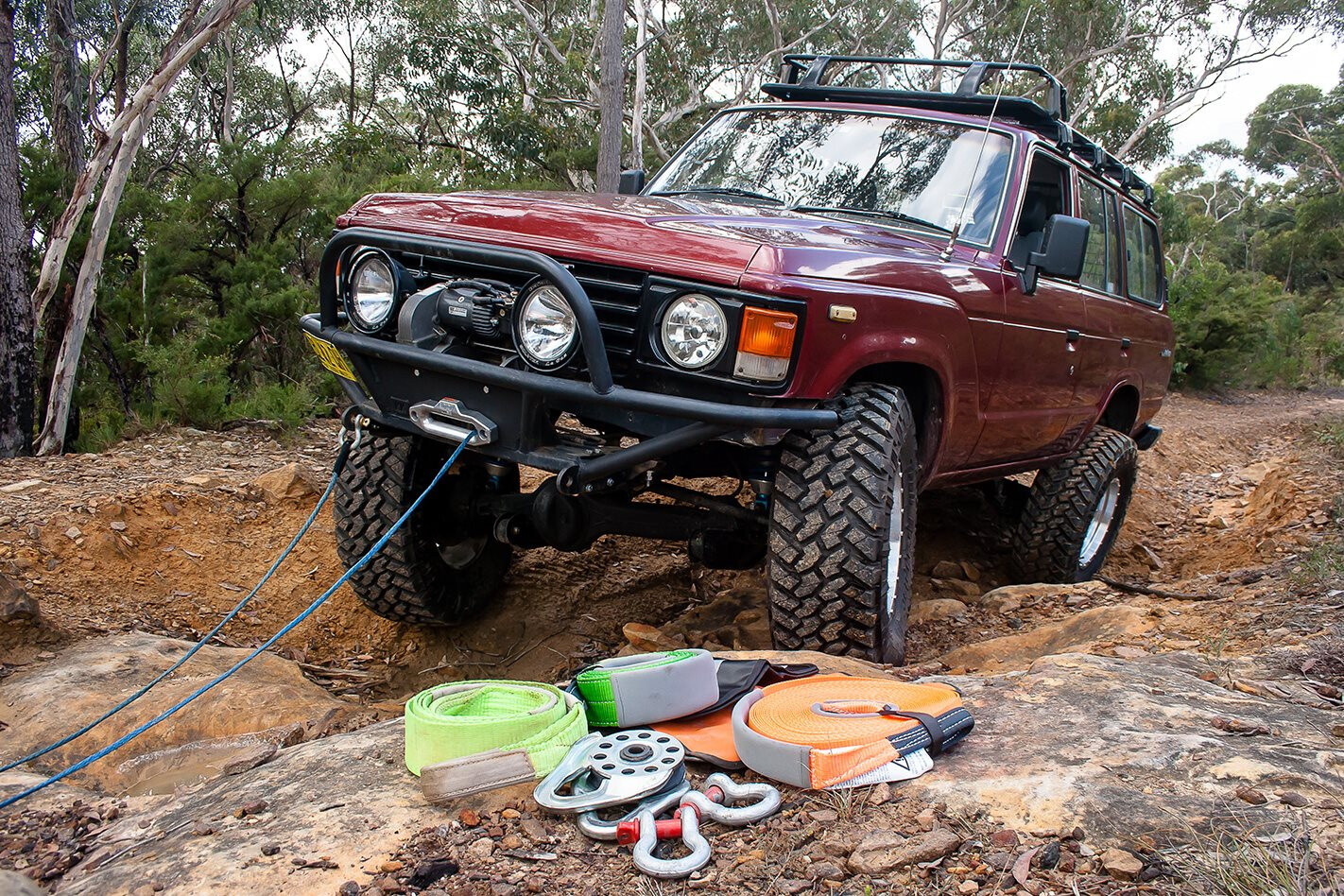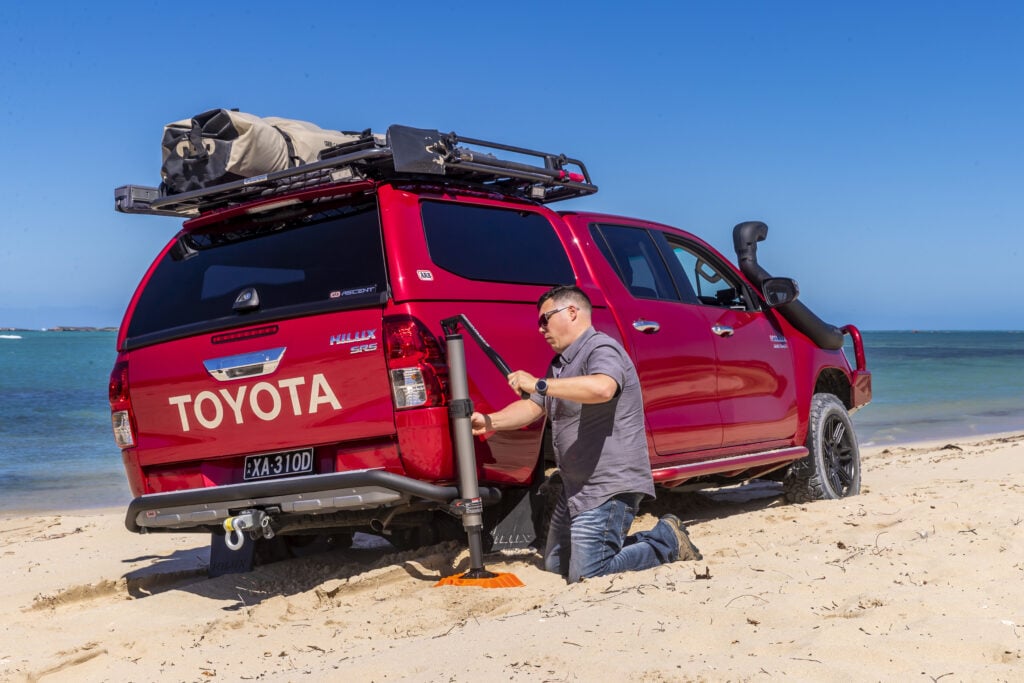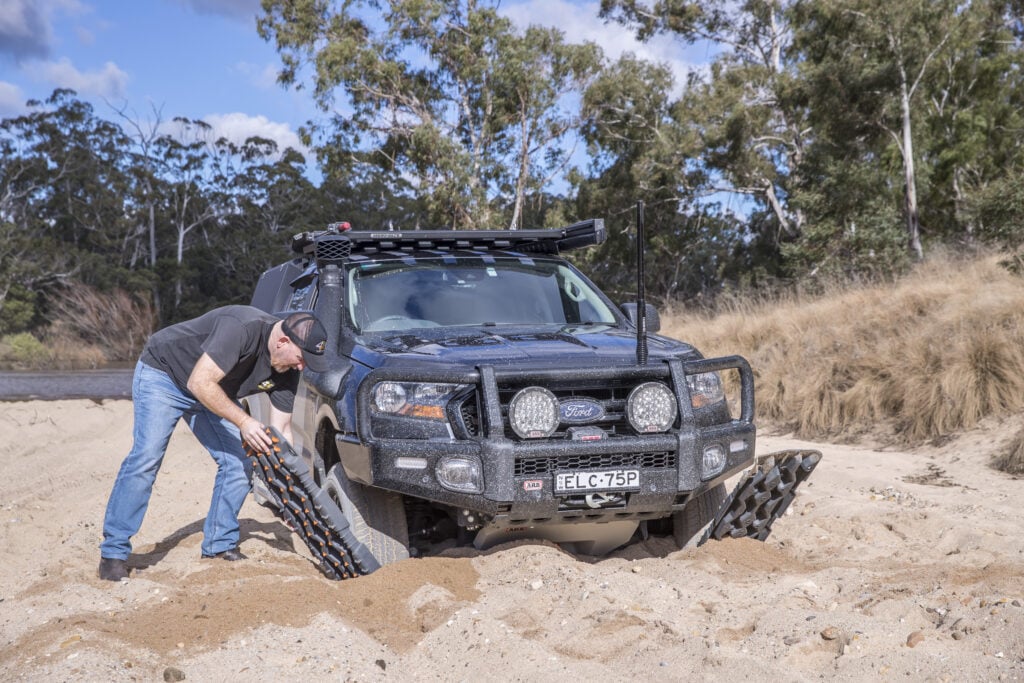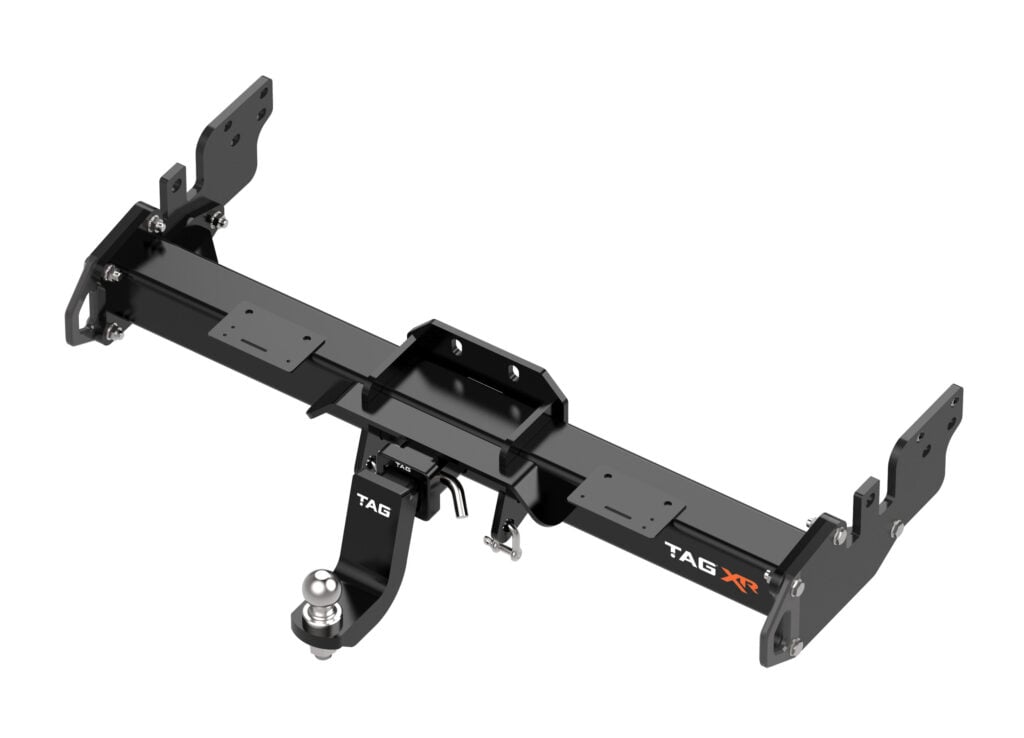LEVERAGE IS the cornerstone of everything we do off-road.
We fit larger tyres to provide a mechanical advantage in the rocks and ruts. Dropping tyre pressures also gives us a mechanical advantage in soft sand and mud, by spreading the same weight over a larger area. Even selecting low-range is making use of mechanical advantage, as we’re halving the speed but giving the motor double the time to do the same job.
Think of it like taking two swings of the hammer to drive in a tent peg, rather than one. That’s the basics of mechanical advantage, and it’s why we’re always in pursuit of lower gearing, bigger tyres and slower winches.
It should be clear by now how important mechanical advantage is in a 4×4, but what mightn’t yet be obvious is where I’m going with this – bear with me for a minute. Your average off-the-shelf electric winch is going to punch in at 12,000lb pulling force – for those readers in the 21st century, that’s 5443kg.
Considering both the Y62 and LC200 can legally weigh in at more than 6000kg loaded up with a trailer in tow, it becomes obvious a 12,000lb winch mightn’t always get you out of trouble, especially when you’re stuck to your axles in sand or mud.
The trick is to give your winch more pulling power. Now sure, there are fancy high-mount, competition-spec winches, or elaborate hydraulic winches, but in the majority of cases your 12,000lb winch is more than capable of doing the job with a double line pull.
By using the mechanical advantage of a double line pull, we’re able to slow the winch-line speed down to half, effectively giving the winch motor two swings of the hammer where it used to only have one.
WHAT GEAR DO YOU NEED As well as a well-stocked recovery kit, there are a few bits and pieces required that are pivotal to these techniques: a tree trunk protector, a rated bow shackle and a winch damper. Above and beyond, you’ll also need one or two pulley blocks, an extra pair of winch dampers and a winch extension strap.
THE NUMBERS ADD UP Let’s assume our loaded 4×4 – including a trailer, long-range tanks and a bike rack on the back for kids – weighs in at exactly 6000kg. If you were to push this on flat, smooth ground, the force required would only be 10 per cent of the total weight (600kg). That 12,000lb winch could drag you and another eight 4x4s reasonably easily.
For every 15 per cent of upwards slope, you need to add 25 per cent of the total load onto what force is required. So on smooth ground, with a 45-degree slope, you’re now requiring 5100kg of pulling ability, just 300kg shy of the winch’s maximum pulling ability.
Add a busted wheel bearing (so you’re dragging a dead weight) and you can see an additional 75 per cent of the total load bringing us up to 9600kg of force required. Mud complicates things even further. Fully loaded in chassis-deep mud can require a ridiculous amount of force (18,600kg, or 41,000lb). That 12,000lb winch isn’t looking so strong on its own anymore, is it?

MULTIPLE LINE PULLS The need for multiple line pulls should be apparent, but the actual mechanics of it are rather impressive. Instead of hooking your winch line directly to the tree trunk protector, as you would in a normal recovery, you run the line out through a pulley block attached to the tree trunk protector and then back to your four-wheel drive’s recovery point with a damper over both lines. This halves recovery speed and doubles the pulling power of the winch, giving a 12,000lb winch 24,000lb of pulling force – that’s close to 11 metric tonnes.
Next, add an additional pulley block to the vehicle’s recovery point, run the winch line to a second tree with a tree trunk protector, and add another winch damper, to triple the pulling power of the winch.
This provides a pulling force of 36,000lb, although it will also cut the speed of the recovery by one third.
It’s important to note a winch’s pulling power is rated with just one layer of rope on the drum. It loses roughly 12 per cent pulling power for each additional layer of rope on the drum. Performing a double, or even triple, line pull can help get more rope off the drum and give you more chance of getting free.
DIRECTIONAL WINCHING While a pulley block allows us to increase the effective pulling power of a winch, it also has the unintended consequence of allowing us to change the direction we’re winching in. This can come in handy in a few different situations.
Firstly, we can winch on an upwards angle to help lift out of mud. You can do this with a single line pull by setting the tree trunk protector high, but the leverage applied to the tree can potentially rip it out.
By fitting a pulley block high in a tree, you can run the line from your four-wheel drive up and through the tree and then down to a low anchor point on a second tree. This will pull the front of your vehicle out of the muck, while pushing the second tree down and not over.
The other major benefit of re-directing winch lines is the sling-shot winch. Particularly useful when you’re not the one stuck, a sling-shot winch allows you to direct your winch line around corners, or even to a tree in front of you, and then back to a 4×4 stuck behind you.
You won’t get the added benefits of mechanical advantage, but you can perform some otherwise impossible recoveries with this technique.
5 TIPS FOR ADVANCED WINCHING
1. Every line needs at least one winch damper. 2. If you run out of dampers, a heavy coat or a sleeping bag will get you out of trouble. 3. Keep the line off the ground – rocks and dirt can tear a winch rope to shreds. 4. The open end of the winch hook points up. If it breaks it’ll go down, not up. 5. Let the winch cool down: 30 seconds on, 30 seconds off.
For more 4×4 recovery tips check out or page.





